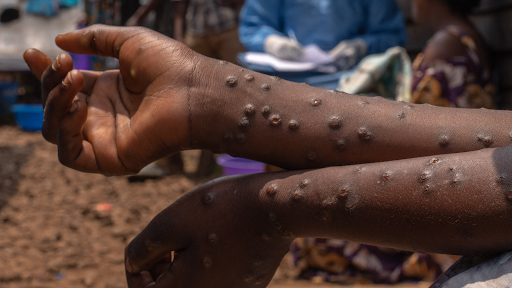The mpox outbreak in Africa continues to strain public health systems, with three countries, the Democratic Republic of the Congo (DRC), Uganda, and Burundi, accounting for approximately 84% of all confirmed cases across the continent between 2023 and 2025.
This data comes from recent reports by the World Health Organization (WHO) and Africa Centres for Disease Control and Prevention (Africa CDC).
DRC Remains the Epicenter with Highest Fatalities
The DRC has emerged as the epicenter of the outbreak, reporting over 15,000 confirmed mpox cases and the highest number of related deaths.
The country faces serious challenges in outbreak management, including declining testing capacity, political instability, and widespread conflict-driven displacement, particularly in the eastern regions.
The majority of mpox cases in DRC are linked to clade I (clade Ib) of the mpox virus, recognised for its higher fatality rate and more severe symptoms compared to other viral clades.
This more virulent strain poses serious threats in areas already suffering from fragile healthcare infrastructure and limited access to diagnostic or therapeutic services.
Uganda Reports Highest Weekly Case Count in Africa
While DRC leads in cumulative cases, Uganda has seen a surge in weekly case numbers, currently reporting 200 to 300 new cases per week, the highest rate on the continent.
Health officials in Uganda are working to expand public education and improve surveillance, but response efforts are being tested by limited healthcare personnel and inconsistent medical supplies in rural and high-transmission zones.
Uganda has previously dealt with mpox outbreaks and other viral hemorrhagic fevers like Ebola, which has helped build some response capacity. However, the sheer volume and rapid spread of the current mpox outbreak are placing additional stress on the system.
Burundi Sees Slowdown but Still a Key Contributor
Burundi has reported a gradual decline in mpox cases, yet it continues to contribute a significant proportion of infections in the ongoing epidemic. The country’s declining case trend is a positive sign, but experts warn against complacency, especially given the potential for cross-border transmission and underreporting in rural areas.
Burundi’s health system, like many in the region, is under-resourced, and officials are calling for continued international support to maintain surveillance, improve community outreach, and scale up vaccination where possible.
Clade I Mpox Virus at the Heart of the Crisis
The clade I mpox virus, dominant in the current outbreak, is known for its severe clinical presentation and increased risk of death, especially in children, immunocompromised individuals, and those lacking access to timely medical care.
Its presence in the most affected countries complicates efforts to control transmission and limit fatalities.
The WHO and Africa CDC emphasize that without enhanced testing, increased vaccination coverage, and widespread public health education, the outbreak could worsen, particularly in vulnerable populations.
Rising Cases in Other African Nations
Beyond the three worst-hit countries, Kenya, Rwanda, and the Republic of Congo have also reported rising mpox cases, though their numbers remain comparatively low. The regional spread signals the importance of cross-border coordination and timely information sharing among African health ministries.
With limited vaccine supply across Africa, public health officials are prioritizing high-risk groups and symptomatic individuals. WHO has also reiterated the need for global equity in vaccine distribution, noting that Africa remains underserved despite bearing the highest disease burden.
Urgent Need for Global and Regional Response
The mpox outbreak in Africa exposes long-standing weaknesses in the region’s health infrastructure. From underfunded public health systems to poor access to diagnostics and therapeutics, the continent continues to struggle with challenges that hinder swift and effective epidemic response.
International support, combined with community engagement, targeted awareness campaigns, and enhanced disease surveillance, is critical for reducing transmission and saving lives.
The WHO and Africa CDC are actively assisting national health ministries, but sustainable progress will require long-term investment in public health resilience.


